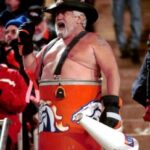The following article was written by Tuck Aikin, a former colleague of mine, several decades ago, but it is as true today as it was then. I hope you enjoy it.
Some time ago, I read that it takes about a mile of open sea to turn around an oil supertanker. Large corporations take about the same amount of effort and lead time too to change direction, but what about small businesses?
If you can imagine a small business being like a fishing trawler dragging its net splayed out behind, it’s not hard to envision why it can’t make a sharp turn either. Further, the small business must know the best tracks to take to “net” the most customer dollars by expending as little as possible of its limited resources – time, effort, and money. And like the independent fisherman, failure to chart such an efficient course means permanent dry-dock.
With the market being such a vast, featureless seascape, how can the entrepreneur calculate the best direction to take before setting out each day, week, month, or year? True, approaching weather, night and day, and the season (the economy) have their obvious effects, but that’s not good enough. The small business owner needs to know the ins and outs of the market shoreline, where his customers like to hole up, when they like to feed and what they like to eat, what currents they like to take, when and why they decide to change direction, and a whole lot more, to set a course to maximize the catch.
So, what basis to use to calibrate the direction is the challenge. Since the future is unknowable, then that leaves only the past – experience. For the small business owner, that means not just “gut feel,” but it means designed, disciplined, consistent, and timely record keeping: right, accounting/bookkeeping, numbers and math (yuk!), one of the most powerful management tools available and one that is often sorely neglected.
It’s unfortunate, but much too frequently, the new business operator sets up his or her financial records to satisfy the CPA, the bookkeeper, the Internal Revenue Service, the insurance company, or the attorney. It’s only later (too late?) that the owner realizes that he is the only one who can determine what he needs to know and when he needs to know it.
Properly constructed, the principal financial statements, the cash flow statement, the income statement, and the balance sheet all should be designed to reveal a wealth of information about what happened and why – considerably more than that needed to satisfy all those ‘expert’ authorities.
Targeted supplemental records should be established as well to reveal telling trends and to allow husbanding of scarce resources. Specifically:
- Which products and services are the most/least profitable, and which are in most/least demand?
- What is the rate of expenditure of resources such as cash, raw materials, and payroll for new employee training?
- How fast do assets and products become obsolete?
- Overall are sales increasing or declining, and is that measured in dollars or unit sales?
- What is the relationship between price and demand?
- Which products or services contribute the most to revenues, which to “the bottom line”?
- What percentage of overall sales are due to repeat customers, and what percent to new customers?
- From what locations do most sales derive, and which ones do the least?
- What functions of the business receive the most complaints/compliments from customers, suppliers, and employees?
- If sales are declining/increasing, is it because of what a competitor is doing/not doing, or what you are doing/not doing, or something else?
- Is cash depleting faster than it’s accruing, or vice versa?
As someone once said, “If you don’t know where you are going, any road will take you there.” But any road can lead to a cliff, and if you’re going 75 miles an hour…
Related Post: Why You Need to Be Measuring the Right Things
Tuck Aikin was a former SCORE colleague of mine for many years until his retirement. Tuck is a prolific writer and wrote small business-themed articles for the Colorado Springs Gazette for many years. As a co-mentor, Tuck was my inspiration for me starting this blog. The preceding post is reproduced with permission from the author.












